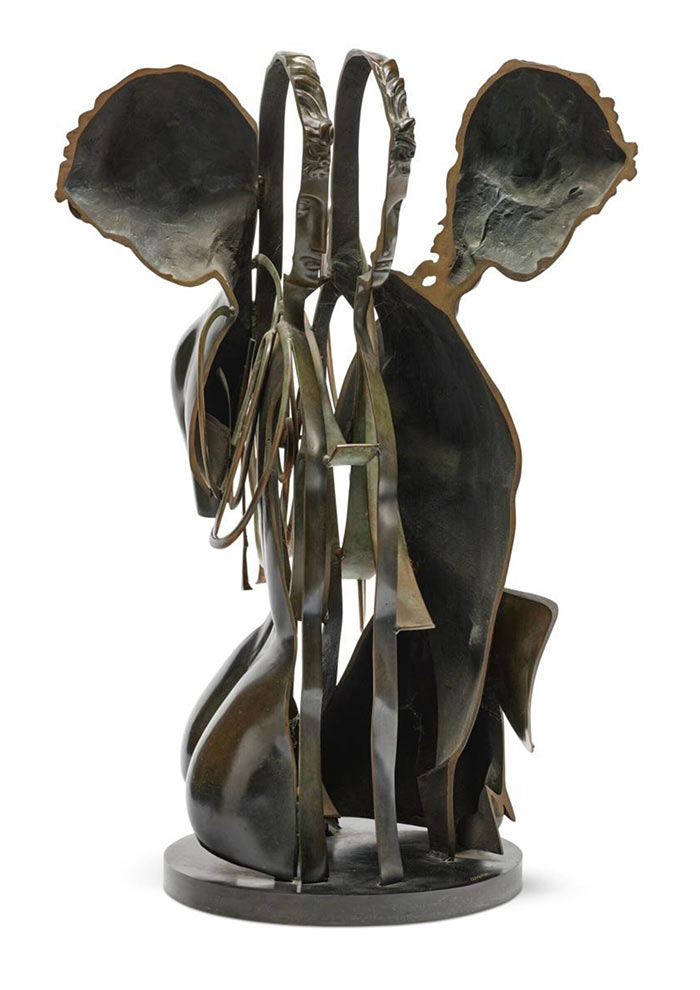Arman, an American-French artist, was renowned for his distinctive found-object sculptures. Inspired by Dadaist philosophies and aesthetics, the artist collected forks, instruments, and teapots, which he then staged within vitrines. “I maintain that the expression of junk and objects has an intrinsic value, and I see no need to look for aesthetic forms in them and to adapt them to the colors of the palette,” he said, explaining his approach to his subject matter.
Arman is most associated with the Nouveau Réalisme (New Realism) movement that emerged in 1960, and which represented France’s response to the trend of Pop art that was sweeping Europe and the United States. Arman had first emerged as a lyrical abstract painter, but he soon rejected the style and began making sculpture inspired by the concept of the readymade. Arman’s most notable work was preoccupied with the consequences of mass production: his Accumulations often reflected on the identical character of modern objects; his Poubelles, or “trash cans,” considered the waste that results when these objects are discarded; and his Coleres, or “rages,” expressed an almost irrational rage at objects that, in modern times, threatened to dominate everyday life.
At his best, Arman delivered a powerful and chilling rejection of modernization and the culture of mass consumption. Later, he developed an aesthetic based on the act of destruction, his pieces commemorating the obliteration objects in various ways. Arman’s work is an important bridge between European and American trends in Pop art in the 1960s through the 1970s. His own collection of African Art has been an invaluable addition to institutions worldwide, including the Museum of African Art in New York, where his wife is a current board member. The Armand P. Arman Trust and Corice Canton Arman continue to uphold his legacy, supporting education and research on the artist’s life and work. A comprehensive exhibition of Arman’s work opened in February 2011 at the Museum Tinguely in Basel, in conjunction with the Centre Pompidou, underlining Arman’s enduring relevance in the art world today.


